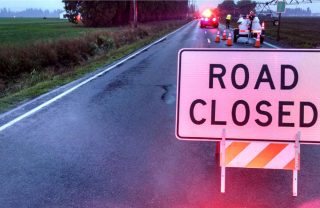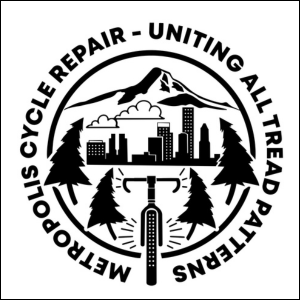
(Photo: Marion County Sheriff’s Office)
A person was killed this morning while bicycling on a rural road just east of Stayton, a small town about sixty miles south of Portland.
We don’t always cover fatal bicycle collisions so far away from the Portland metro area; but the statement about this one just released by the Marion County Sheriff’s Office deserves a closer look. The language used in the statement shows how far Oregon law enforcement agencies have to go to create a culture around traffic deaths that is in line with Vision Zero principles.
According to the Marion County Sheriff’s office, the collision occurred when someone driving a motor vehicle hit a bicycle rider from behind. Read their official statement (released just two and-a-half hours after the collision) and think about how the language paints the relative culpability of each party:
Around 6:30 a.m., this morning, deputies with the Marion County Sheriff’s Office were called to a vehicle versus bicyclist crash on Shaff Road SE near Rainwater Road SE near Stayton. When deputies arrived they found a single vehicle had struck a bicyclist killing the cyclist instantly.
Early indications show that the cyclist was traveling east on Shaff Road when an eastbound minivan struck the bicycle. The area the crash took place has very little shoulder and no lighting. At the time of the crash it was dark, rainy and the cyclist was wearing dark clothing and no light on the bicycle.
The driver of the vehicle remained on the scene and is cooperating with investigators. Identities of the involved will be released once the appropriate notifications have been made. Shaff Road was closed for 2 hours while investigators processed the scene, Shaff Road has now reopened for regular traffic.
When this information is absorbed by the public via the local media — most of whom simply reprint these statements verbatim without telling the audience they’re doing so — what do you think the takeaways are?
The Sheriff’s Office statement goes out of its way to make excuses for the auto user and creates the perception that the bicycle user was acting irresponsibly. A culture where driving is the dominant paradigm interprets a statement like this as something like, “Well, that bicyclist had it coming. They really ought to stay off those dangerous roads.”
Advertisement
Let’s be clear: There is no Oregon law against riding in the dark, riding in the rain, riding to the left of the fog line (especially when there’s no shoulder to ride in), or wearing dark clothing. Oregon law also says you don’t need a rear light (only a rear reflector). Despite the fact that the bicycle rider appears to have been operating legally on the roadway, this statement unfairly creates an aura of guilt around one party while creating sympathy for the other.
This orientation of supportive language around the person operating the motor vehicle, combined with the tone of blame used to describe the actions of a potentially innocent bicycle user who can no longer speak for themselves, is all too common.
Meanwhile, the person who was operating their vehicle in such a way that it collided with another road user and caused their death, is portrayed as being a good citizen who, “remained at on the scene and is cooperating” — actions that are not only required by Oregon law but are potentially felony criminal offenses if not obeyed. Furthermore, in this case the person driving the car had much more legal responsibility to begin with because they decided to overtake a vulnerable road user, not to mention the greater moral responsibility that comes with operating a vehicle that’s so easily capable of killing another person.
Given all that, why does the Sheriff’s statement not mention whether or not the auto user was distracted? Or whether or not their windshield wipers were turned on and working effectively? And why no mention of Oregon’s safe passing law that requires people to give bicycle riders plenty of space when overtaking them? Why no language about whether or not the auto user was going a safe speed given that it was dark, rainy, and there was no shoulder for a bicycle rider to use? Was the driver using the car’s headlights?
If Oregon is serious about vision zero, law enforcement agencies need to get a lot more perspective and sensitivity around these issues. Language is powerful and it shapes our culture — the same culture that informs the behaviors of road users and the people who design and patrol them. Police agencies must stop assigning blame in media statements. Stick to the facts known and leave other speculative assumptions out of it — especially when those assumptions are the result of inherent bias in favor of one type of road user and against another.
This is the 379th person to die while using Oregon roads so far this year, a total that’s nearly nine percent higher than the 348 people who had died by this date in 2015.
— Jonathan Maus, (503) 706-8804 – jonathan@bikeportland.org
BikePortland is supported by the community (that means you!). Please become a subscriber or make a donation today.

